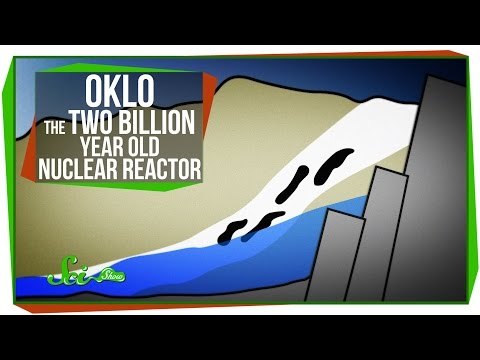Gabon was a French colony when prospectors from the French nuclear energy commissariat (the industrial parts, which later became the COGEMA and later Areva NC) discovered uranium in the remote region in 1956. France immediately opened mines operated by Comuf (Compagnie des Mines d’Uranium de Franceville) nearMounana village in order to exploit the vast mineral resources and the State of Gabon was given a minority share in the company.
For forty years, France mined for uranium in Gabon. Once extracted, the uranium was used for electricity production in France and much of Europe. Today, however, the uranium deposits are exhausted, and the mine is no longer worked. Currently, mine reclamation work is ongoing in the region affected by the mine operations.
There is strong geochemical evidence that the Oklo uranium deposit behaved as a natural nuclear fission reactor in Precambrian times: some of the mined uranium was found to have a lower concentration ofuranium-235 than expected, as if it had already been in a reactor. Geologists found that it had been in a reactor before—two billion years ago. At that time the natural uranium had a concentration of about 3% 235U, and could have gone critical with natural water as neutron moderator.
